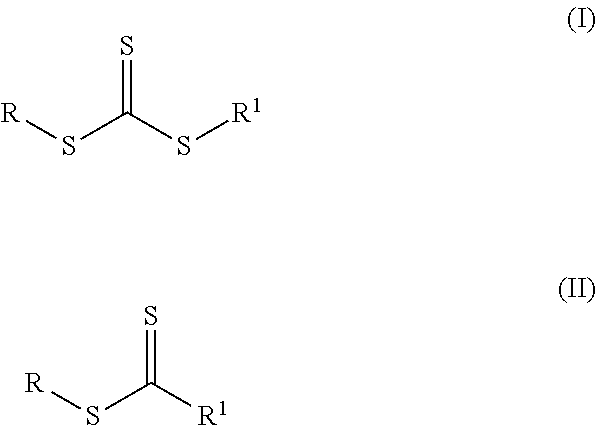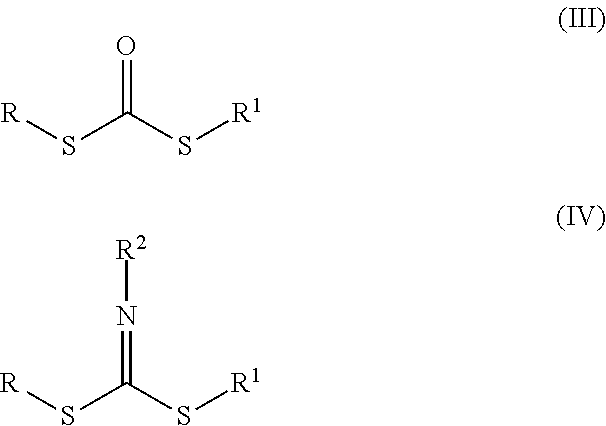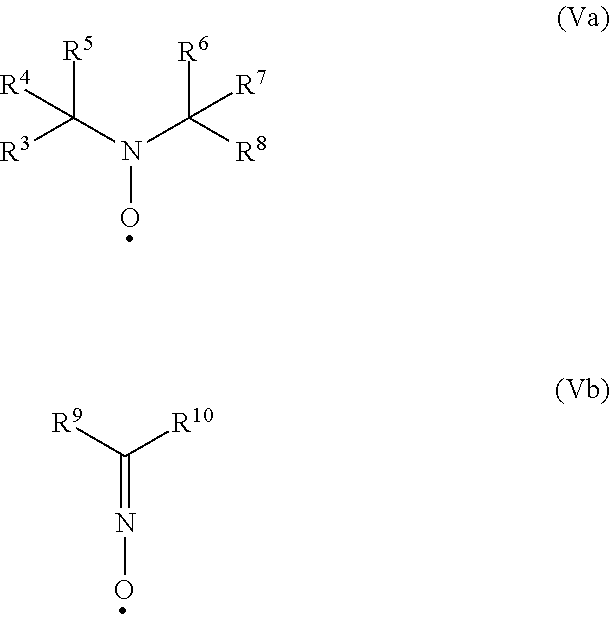Pressure-sensitive adhesive mass for low energy or rough surfaces
a technology of pressure-sensitive adhesives and rough surfaces, applied in the direction of adhesive types, film/foil adhesives, lamination, etc., can solve the problems of inability to adjust the parameters independently of one another, block copolymer adhesives generally exhibit poor temperature stability, and the proportion of resins is limited
- Summary
- Abstract
- Description
- Claims
- Application Information
AI Technical Summary
Benefits of technology
Problems solved by technology
Method used
Image
Examples
##ventive example 1
Inventive Example 1
Polymer 1
[0167]A 2 L glass reactor conventional for radical polymerizations was charged with 8 g of acrylic acid, 196 g of 2-ethylhexyl acrylate, 196 g of a mixture of monomers A for which R2═R3═H and R1 is a C17 alkyl chain having three branching sites and the glass transition temperature of the homopolymer is −72° C., 133 g of special-boiling-point spirit 69 / 95, and 133 g of acetone. After nitrogen gas had been passed through the reaction solution with stirring for 45 minutes, the reactor was heated to 58° C. and 0.2 g of 2,2′-azodi(2-methylbutyronitrile) (Vazo 67™ from DuPont) was added. The external heating bath was then heated to 75° C. and the reaction was carried out constantly at this external temperature. After a reaction time of 1 hour, 20 g of isopropanol were added. After 2.5 hours, the batch was diluted with 100 g of acetone. After a reaction time of 4 hours, a further 0.2 g of Vazo 67™ was added. After a polymerization time of 7 hours, the batch was ...
##ventive example 2
Inventive Example 2
Polymer 2
[0168]A 2 L glass reactor conventional for radical polymerizations was charged with 8 g of acrylic acid, 392 g of a mixture of monomers A for which R2═R3═H and R1 is a C17 alkyl chain having three branching sites and the glass transition temperature of the homopolymer is −72° C., 133 g of special-boiling-point spirit 69 / 95, and 133 g of acetone. After nitrogen gas had been passed through the reaction solution with stirring for 45 minutes, the reactor was heated to 58° C. and 0.2 g of Vazo 67™ (from DuPont) was added. The external heating bath was then heated to 75° C. and the reaction was carried out constantly at this external temperature. After a reaction time of 1 hour, 20 g of isopropanol were added. After 2.5 hours, the batch was diluted with 100 g of acetone. After a reaction time of 4 hours, a further 0.2 g of Vazo 67™ was added. After a polymerization time of 7 hours, the batch was diluted with 100 g of special-boiling-point spirit 60 / 95, and afte...
PUM
| Property | Measurement | Unit |
|---|---|---|
| wt % | aaaaa | aaaaa |
| wt % | aaaaa | aaaaa |
| wt % | aaaaa | aaaaa |
Abstract
Description
Claims
Application Information
 Login to View More
Login to View More - R&D
- Intellectual Property
- Life Sciences
- Materials
- Tech Scout
- Unparalleled Data Quality
- Higher Quality Content
- 60% Fewer Hallucinations
Browse by: Latest US Patents, China's latest patents, Technical Efficacy Thesaurus, Application Domain, Technology Topic, Popular Technical Reports.
© 2025 PatSnap. All rights reserved.Legal|Privacy policy|Modern Slavery Act Transparency Statement|Sitemap|About US| Contact US: help@patsnap.com



